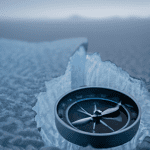Introduction
Surveys have long been recognized as a valuable tool for collecting data. They provide researchers with a means to gather information from a large number of individuals, allowing for a comprehensive analysis of trends and patterns. In this ultimate guide, we will explore the effectiveness of surveys as a method for data collection and discuss their benefits and limitations.
Benefits of Surveys
Surveys offer several advantages when it comes to collecting data. Firstly, they allow researchers to reach a large and diverse audience. By distributing surveys online or through other channels, researchers can gather responses from individuals across different geographical locations, demographics, and backgrounds.
Secondly, surveys provide a structured format for data collection. With carefully designed questions and response options, researchers can ensure consistency and standardization in the data they collect. This makes it easier to analyze and compare responses, identify trends, and draw meaningful conclusions.
Furthermore, surveys offer a cost-effective means of data collection. Compared to other methods such as interviews or focus groups, surveys can be distributed to a large number of participants at a relatively low cost. This makes surveys particularly useful for research projects with limited budgets.
Limitations of Surveys
While surveys have numerous benefits, it is important to acknowledge their limitations as well. One key limitation is the potential for response bias. Participants may provide inaccurate or biased responses due to various factors such as social desirability bias or misunderstanding of questions. Researchers need to be mindful of these biases and take steps to minimize their impact.
Another limitation is the reliance on self-reported data. Surveys rely on participants’ ability and willingness to accurately recall and report their thoughts, opinions, and behaviors. However, individuals may not always provide accurate or truthful responses, leading to potential inaccuracies in the collected data.
Additionally, surveys may not be suitable for all research objectives. Some topics or phenomena may require more in-depth exploration, which surveys alone may not be able to provide. In such cases, researchers may need to supplement survey data with other qualitative or quantitative methods.
Best Practices for Survey Design
To maximize the effectiveness of surveys as a data collection method, researchers should follow some best practices in survey design. These include:
1. Clearly defining the research objectives and the specific information required.
2. Developing clear and concise questions that are easy for participants to understand.
3. Using a mix of question types, such as multiple-choice, Likert scale, and open-ended questions, to gather a comprehensive range of data.
4. Pre-testing the survey with a small sample of participants to identify any issues or areas for improvement.
5. Ensuring the survey is visually appealing and user-friendly, with clear instructions and logical flow.
6. Maintaining participant confidentiality and anonymity to encourage honest and unbiased responses.
7. Analyzing the collected data using appropriate statistical techniques to draw meaningful conclusions.
Conclusion
In conclusion, surveys can be a highly effective method for collecting data. They offer numerous benefits, including the ability to reach a large and diverse audience, provide structured data, and offer cost-effective data collection. However, it is important to be aware of the limitations of surveys, such as response bias and reliance on self-reported data. By following best practices in survey design, researchers can maximize the utility of surveys and obtain valuable insights for their research projects.




